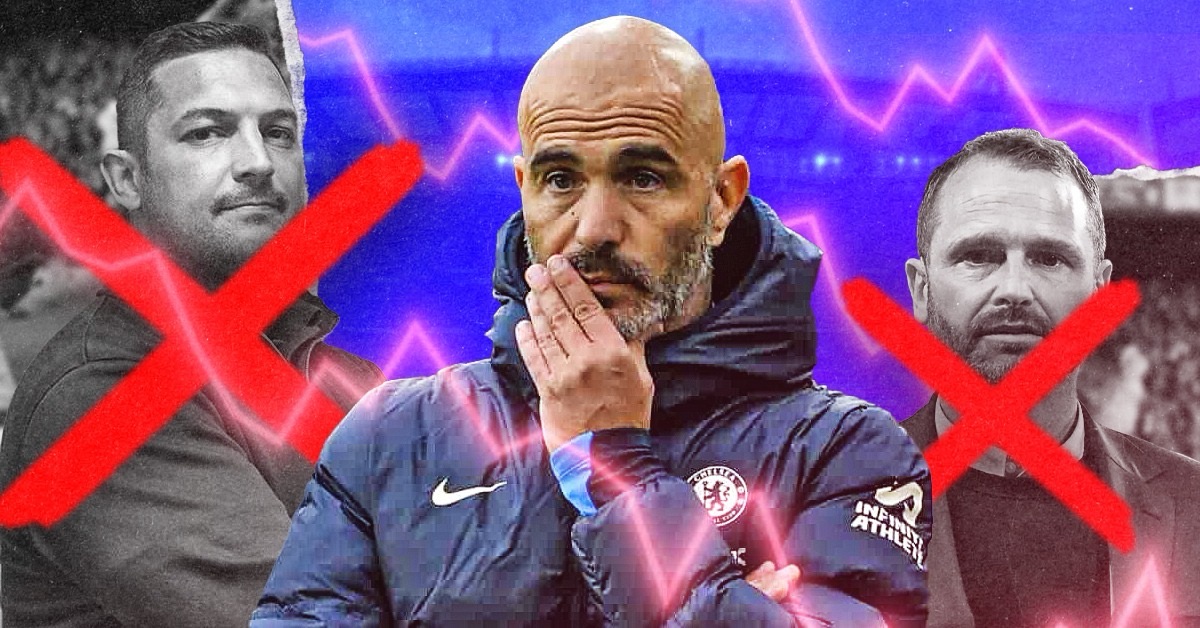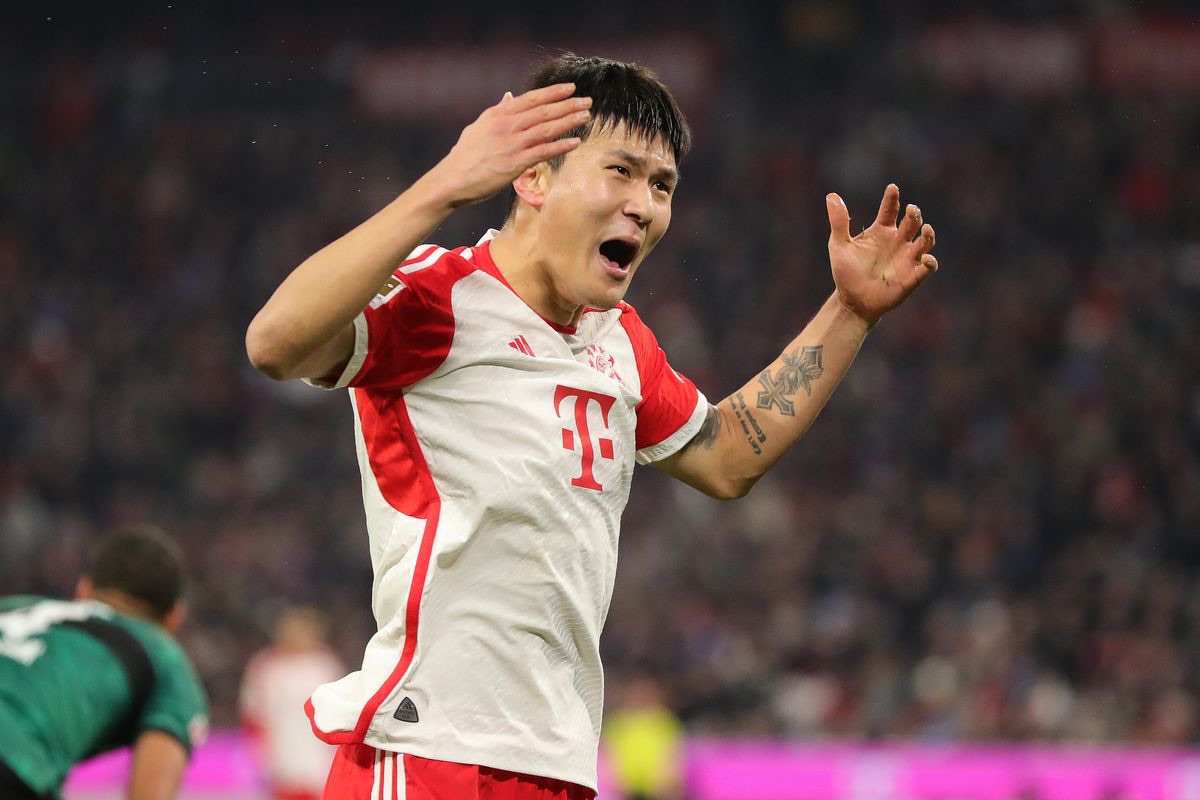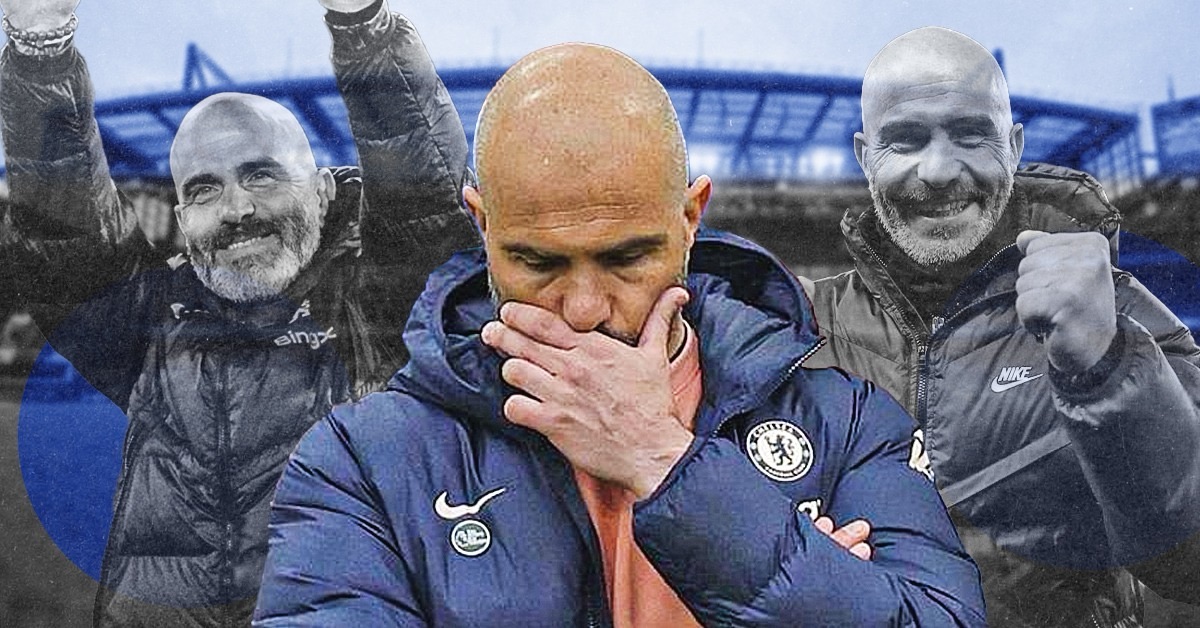
As Chelsea secured their first even Club World Club Trophy, here were the 3 Tactical Takeaways from our historic win in Abu Dhabi:
1 – Chelsea’s vertical approach to breaking down Palmeiras
Despite starting with a 5-4-1 on paper, Palmeiras implemented a 5-3-2 in press in order to outnumber Chelsea’s midfield 3v2 (A). In response, Chelsea implemented a 3-1-3-3 shape which saw them prevent the numerical superiority Palmeiras was aiming for by establishing a 3v3 situation in midfield (B). Within this 3-1-3-3, Chelsea’s wingbacks adopted wide, advanced starting positions as makeshift wingers in a front 3. Here, both Chelsea’s wingbacks engaged the opposition’s wingbacks, relieving their inside forwards of their wide/advanced positional duty, allowing them to drop between the lines to form a midfield 3 (C).

With 3v3 in midfield, Chelsea had to find a way to relieve such compactness in order to facilitate vertical progression of play. To do so, 1 of Chelsea’s midfield 3 made forward runs alternately in efforts to drag a Palmeiras midfielder with them (D). When done successfully, it created 2v2 in midfield, allowing more space for Chelsea’s inside forwards to receive the ball between the lines (E). For possession-based teams, it is when the ball arrives in these positions that attackers cause havoc. Why wasn’t this the case with Chelsea?
2 – Chelsea’s failure to be penetrative in the 1st half
Since there is now numerical equilibrium (2v2) in midfield, there is no “free man” to receive the ball and turn completely unmarked. Instead, Chelsea’s inside forwards were only afforded slight space and time to receive the ball (F) where they were presented with two options: be progressive or back-pass. Since Chelsea’s wingbacks acted as wingers engaging Palmeiras’ last line of defense, their inside forwards were completely isolated with no one to combine with. This is as opposed to when Chelsea’s wingbacks start deep and are able to support their forwards into the final third (G). Instead, it was up to Chelsea’s inside forwards to take sole responsibility of getting the ball to the final third. Here, they were called to turn/beat their markers on their own in order to roam into space between the lines and then progress the ball into the final third (H).

The best possession-based teams in the world have players who completely own this role. They are able to completely take advantage of spaces between the lines in order to facilitate centrally penetrative, vertical football. Two specialists of this role that come to mind are Man City’s Bernardo Silva and De Bruyne, both players who are lethal when given the ball in such luxurious positions. While it is one of the most luxurious parts of the pitch to possess the ball, it is also one of the most difficult parts of the pitch to keep possession. It is the part of the pitch whereby two compact lines of defense close in and applies pressure to whoever approaches. Therefore, it is necessary that players possess the mental courage to be positive in such situations, together with possessing the technical ability to carry out such actions successfully. When it comes to Chelsea, massive questions need to be asked about all their inside forwards when it comes to these attributes. Do they possess the ability to completely own such areas of the pitch? As far we have seen, no. This is why Tuchel was forced to change Chelsea’s vertical attacking approach to a wide one in the 2nd half.
3 – The 2nd half change that saw Chelsea gain the upper hand
In the second half, Tuchel changed Chelsea’s vertical approach in attack to a wide one. Here, Chelsea progressed their attacks via wide overloads, in efforts to play around Palmeiras’ low-block as opposed to centrally through it. The following are explanations of dynamics behind Chelsea’s LHS and RHS overload.
On the LHS, we saw Kovacic relieved of his “lone 6” role where he was allowed the freedom to roam as a box-to-box LM. Here, CHO (LWB) assumed a deeper starting position, while Kai (LAM) took up a left-forward position. This created the following passing triangle (I) in wide areas which saw us get around Palmeiras’ low block and supply crosses into the box, eventually resulting in Chelsea’s first goal. On the RHS, the same principles applied. Pulisic (RAM) took the “Kovacic” role as a RM (while Kante remained as DM), Azpi (RWB) assumed a deeper starting position and Lukaku (ST) assumed a right-forward position. Here, the same passing triangle (J) was formed in wide areas while allowed Chelsea to play around Palmeiras’ low block and supply crosses into the box.

Here, Chelsea’s attackers were able to see moments of quick interchanges via wide areas which saw them create decent chances. Later on, in the game, Tuchel built on this philosophy by implementing a 4-1-4-1 via the introductions of Ziyech, Werner, Saul and Sarr (K). Here, Chelsea were able to build on their wide overload approach by implementing an extra number in attack (L). A change that eventually led Chelsea to seeing out the rest of the game, creating enough threat to win a penalty that eventually won them the game.
All in all, Chelsea vs Palmeiras made for a tedious viewing that was built on a disciplined tactical battle between the two teams. And whilst Chelsea won the battle, there remain many questions around the newly crowned “Champions of the World”, especially entering the business end of the season.
Written by: Ryan Gunness







